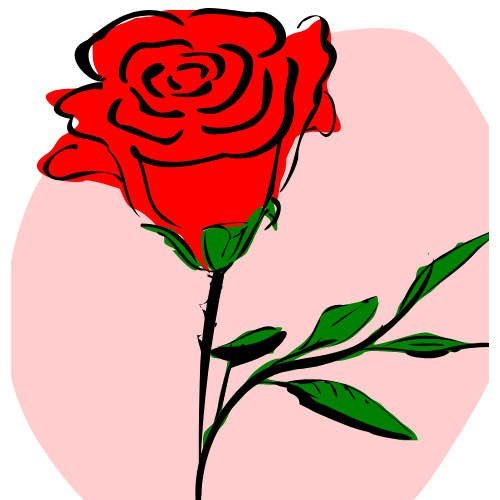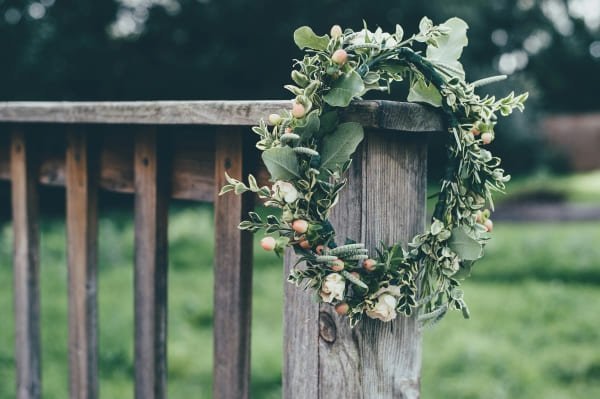


Dried flower wreaths are a beautiful and versatile addition to any home decor, bringing the beauty of nature and adding color and texture to an interior without the need for constant maintenance. In this article, we'll take an in-depth look at dried flower wreaths, from their history and significance to step-by-step instructions for making your own. We'll also explore the different styles and uses of these charming decorations.
Wreaths have been used for centuries in various cultures around the world. Traditionally, they have symbolized different things such as victory, celebration and eternal life. In Ancient Greece, laurel wreaths were given to winners of sports competitions. During the Roman Empire, they were a symbol of status and honor. In modern times, wreaths are often associated with holidays and special occasions.
Dried flower wreaths in particular offer a timeless appeal, presenting beauty preserved at its natural peak and allowing us to appreciate the vibrancy and charm of flowers long after the blooming season has passed. These wreaths can be used to celebrate the season, holidays, or just to add a little decorative flair to your home.
Longevity: Unlike fresh flowers, dried flowers can last for months or even years if properly maintained. This makes dried flower wreaths a long-lasting decorative option.
Low Maintenance: Dried wreaths require minimal maintenance. They don't need water or sunlight and require little maintenance to stay beautiful.
Sustainability: Using dried flowers is an environmentally friendly option. It reduces waste and can often reuse flowers that might otherwise be discarded.
Versatility: Dried flower wreaths can be customized to fit any decorating style or occasion. They can be made in a variety of sizes, colors and designs to suit your personal taste.
Making a dried flower wreath is an easy and rewarding craft project. Here is a list of the materials you will need:
Wreath Base: this can be made from a variety of materials such as grapevine, wire, straw or foam. Grapevine and wire bases are especially popular for their sturdiness and ease of use.
Dried Flowers: A variety of dried flowers can be used, including lavender, roses, purple flowers, hydrangeas and baby's breath. Choose flowers with complementary colors and textures.
Greenery: Dried eucalyptus, ferns and other foliage can add depth and contrast to a wreath.
Floral Wire: Use thin wire to attach flowers and greenery to the base of the wreath.
Floral Tape: This can help hold the stems of the flowers and leaves in place.
Hot Glue Gun: For added security, a hot melt glue gun can be used to glue flowers and decorations.
Scissors or Pruning Shears: These are necessary to trim the stems of flowers and greenery.
Ribbon or Twine: Use to hang wreaths or add decorative bows.
Before you begin, gather all of your materials in one place. Make sure you have enough dried flowers and greenery to cover the base of your wreath. It's a good idea to use a variety of colors and textures to create a visually interesting wreath.
If you're using a grapevine or wire base, you may need to enclose it in a perfect circle. For a foam or straw base, you can just start attaching the flowers.
Before attaching anything, place your flowers and greenery at the bottom of the wreath. This will help you visualize the final product and make adjustments as needed. Try to evenly distribute the color and type of flowers around the wreath.
Begin by using floral wire or tape to adhere the greenery to the wreath. This will create a backdrop for the flowers and make the wreath fuller. Wrap the stems of the greenery around the base and secure with wire or tape.
Once the greenery is in place, begin adding the dried flowers. Attach each flower individually and secure them to the base with floral wire or hot melt glue. Start with larger flowers and then put smaller flowers to fill in the gaps. Make sure the flowers are evenly distributed for a balanced look.
After all the flowers are secured, check for any loose stems or sections that need extra support. Use extra floral wire or hot melt glue to secure them.
Add a few finishing touches such as a decorative bow or ribbon. You can also add other embellishments such as dried berries, pine cones or small ornaments depending on the season and occasion.
Once your wreath is complete, find a suitable place to hang it. Dried flower wreaths can be hung on a door, wall, or used as a table centerpiece.

Dried flower wreaths can be made in a variety of styles to suit different tastes and occasions. Below are some popular styles:
A rustic wreath usually uses natural, unpretentious tones and materials. Combine dried wheat, lavender and eucalyptus with burlap ribbon. This style is perfect for farmhouse or country-themed decor.
Use grapevines as a wreath base for a more natural look.
Add some natural elements like twigs, feathers and hay.
Keep the color palette neutral, such as browns, greens and soft yellows.
Vintage wreaths usually feature pastel colors and delicate flowers like roses, hydrangeas and baby's breath. This style adds a touch of nostalgia and romance to your decor.
Choose a wire or foam base that can easily cover the flowers.
Use pastel colors such as pink, lavender and cream.
Add some vintage-inspired embellishments such as lace, pearls or old-fashioned keys.
Seasonal wreaths celebrate the changing seasons with the right colors and flowers. For example, a spring wreath might be bright yellow and purple, while a fall wreath might be orange and red.
Spring: Use pastel-colored flowers like dried peonies, tulips, and baby’s breath. Add elements like small nests or faux eggs for a springtime feel.
Summer: Bright and bold colors like dried sunflowers, zinnias, and marigolds can evoke the warmth and vibrancy of summer. Incorporate elements like seashells or starfish for a beachy theme.
Autumn: Rich, warm tones of oranges, reds, and yellows are perfect for an autumn wreath. Use dried leaves, berries, and wheat for a harvest-inspired look.
Winter: For a winter wreath, use white and silver flowers like dried roses, statice, and cotton bolls. Add pinecones, cinnamon sticks, and faux snow for a festive touch.
Christmas: Incorporate traditional holiday elements like red and green dried flowers, holly berries, and pine branches. Add ornaments, ribbons, and small bells for a festive decoration.
Easter: Soft pastels and spring flowers like dried daffodils, hyacinths, and lavender can create a cheerful Easter wreath. Add small decorative eggs or bunnies.
Thanksgiving: Use autumnal colors and elements like dried corn husks, pumpkins, and gourds. Incorporate rustic accents like burlap ribbons and wooden charms.
Wedding: A wedding wreath can be made with white and blush-colored flowers like roses, hydrangeas, and lilies. Add pearls, lace, and a monogram of the couple's initials for a personalized touch.
Birthday: Customize a birthday wreath with the recipient’s favorite colors and flowers. Add small, festive elements like balloons, candles, or banners.
Anniversary: Use romantic flowers like dried roses and carnations. Add elements like hearts, love notes, or the couple's photos for a sentimental touch.
Modern wreaths usually feature clean lines and bold colors in a minimalist design. They can include unexpected elements such as geometric shapes or metallic accents.
Use a smooth wire base or a simple hoop.
Choose a limited color palette with one or two bold colors.
Add some modern elements, such as gold or silver spray-painted flowers, or abstract shapes.

Proper care can help your dried flower wreath last longer and maintain its beauty. Here are some tips for caring for your wreath:
Avoid Direct Sunlight: Exposure to direct sunlight can cause the colors of dried flowers to fade. Hang your wreath in the shade or indoors.
Keep Away from Moisture: Dry flowers will mold if exposed to moisture. Keep your wreath in a dry environment and avoid hanging it in high humidity areas, such as the bathroom.
Dust Regularly: Over time, dust can accumulate on dried flowers. Remove dust gently with a soft bristle brush or a can of compressed air.
Handle with Care: Dried flowers are fragile and can break easily. Be careful when moving or hanging the wreath.
Store Properly: If you need to store your wreath, place it in a sturdy box and keep it in a cool, dry place. This will help protect it from dust and damage.
Dried flower wreaths are very versatile and can be used in a variety of ways:
Door Decor: Hang a dried flower wreath on your front door to welcome guests and add beauty. As the seasons change, the wreath will look new all year round.
Wall Art: Use dried flower wreaths as wall decor to add a natural touch to any room. They can be hung individually or as part of a gallery wall.
Table Centerpieces: Place a wreath with a candle or vase in the center on your dining room table for a beautiful centerpiece. This is especially lovely for holiday dinners and parties.
Gifts: Dried flower wreaths make thoughtful and personalized gifts. Customize the garland with the person's favorite flowers and colors.
Special Occasions: Use wreaths as decorations at weddings, parties, or other special occasions. They can be used to decorate chairs, tables, or even worn as a headdress.
Dried wreaths are a beautiful, long-lasting, and versatile addition to any home. They offer endless customization possibilities and can be tailored to fit any decorating style or occasion. Whether you want to add a bit of rustic charm, vintage elegance, or modern sophistication, a dried flower wreath is a perfect choice.
By following the steps and tips outlined in this guide, you can create your own stunning dried flower wreath. Enjoy the process and the beauty of the finished product as it adds a natural and unique touch to your living space.